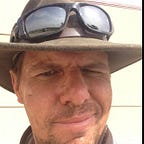A New Photogrammetry Workflow Using Digital Negative Format (DNG) Raw Images.
When Agisoft updated Photoscan to 1.2.5 in July 2016 it included support for Digital Negative (DNG) images. DNG is a standard raw image format written by Adobe, and supported by most photo imaging software. There is also an Adobe utility that can convert different digital camera manufacturers proprietary raw image formats to DNG.
The advantage of using DNG directly in photogrammetry is that it contains all image data, and these images do not need to be converted to Tiffs which increases file size. The DNG format is also archival in the sense that it holds all digital imagery information and can easily be converted to other formats at a later date. The big advantage of using DNG format in my workflow is the decrease in file size.
At the Museum of Texas Tech’s digital heritage lab the main camera used for imagery is a Nikon 24 MP D7100. Our past workflow was to shoot in Nikon’s raw format (NEF) and then convert these images to TIFFs for processing in Photoscan. Each NEF file was 28 MP and each TIFF over 190 MPs. For an average photogrammetry project using between 70–100 images requires between 15–21 GB of hard drive space. In comparison, each DNG file is 25 MP, therefore, a typical photogrammetry project then just requires 1.7–2.5 GB of hard drive space.
The downside of directly using DNG files is that you can not mask these images in other photo processing software such as Photoshop before importing them into Photoscan. Our prior workflow was to do the masking in Photoshop which was often quicker and more reliable than Photoscan. I have found though with the correct lighting and background setup in taking the original images that Photoscan’s magic wand tool can quickly and accurately perform masking operations.
The biggest upside to using DNG file format is the decrease in file size, and the ability to directly associate archival digital images with Agisoft’s Photoscan photogrammetry software.
